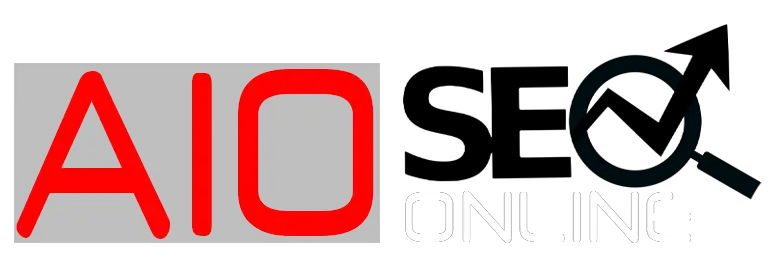Strict Guidelines are essential for creating high-quality, compliant, and SEO-optimized content that meets industry standards and ensures maximum performance on search engines. Following strict guidelines helps content creators and SEO specialists produce clear, relevant, and well-structured articles that satisfy both users and algorithms. This comprehensive guide will explore the importance, benefits, and implementation of strict guidelines in SEO content strategies, using valuable tools and best practices tailored for modern digital marketing.
Understanding Strict Guidelines in SEO Content Creation
The phrase strict guidelines refers to a set of rules and best practices content creators follow to produce optimized, user-friendly, and compliant web content. These guidelines cover everything from keyword usage and content structure to plagiarism prevention, readability, and internal linking strategies.
SEO professionals emphasize strict guidelines to avoid penalties from search engines, ensure content originality, and improve user engagement metrics such as bounce rates and session duration. Clear guidelines also help streamline workflow and maintain consistency across multiple pieces. As Google updates its algorithms, adhering to search quality raters’ guidelines and optimizing content semantically have become more critical than ever.
For anyone working on WordPress SEO or managing a digital marketing campaign, having these strict guidelines in place significantly elevates the chances of ranking on Google’s first page and driving targeted traffic.
Key Components of SEO Strict Guidelines
- Keyword Placement: Strategic integration of the main keyword and LSI keywords in titles, headings, and body text.
- Content Uniqueness: Ensuring zero plagiarism using reliable plagiarism checkers.
- Content Structure: Clear headings (H1, H2, H3), lists, tables, and paragraph formatting for readability.
- Internal and External Linking: Linking to authoritative sources and relevant internal pages to boost SEO value.
- Semantic Optimization: Using related terms to enrich the text contextually.
- Technical SEO: Utilizing meta tags, XML sitemaps, robots.txt files, and ensuring site speed and mobile-friendliness.
Implementing Strict Guidelines for Keyword Integration and Semantic SEO
Keyword integration is one of the fundamental aspects of strict guidelines in SEO content development. The main keyword must appear naturally within the first paragraph and be repeated at critical points such as headings and the conclusion.
Beyond the main keywords, it’s vital to use LSI (Latent Semantic Indexing) keywords to enhance semantic relevance. LSI keywords help search engines understand the context and improve rankings for related searches.
Steps for Effective Keyword Integration
- Include the primary keyword in the first 100 words to establish the topic early.
- Use LSI keywords such as SEO content strategy, content optimization, and keyword placement techniques within headings and paragraphs.
- Integrate keywords organically to avoid keyword stuffing penalties by Google.
- Deploy SEO meta tag generators for optimized titles and descriptions that reflect keyword intent.
- Regularly analyze keyword density using tools like the Keyword Density Checker.
Tools like the AI Keyword Cluster Ideas generator can help create semantically connected keyword clusters for comprehensive content coverage.
Ensuring Content Originality and Compliance through Strict Guidelines
Maintaining originality is a cornerstone of strict guidelines. Search engines penalize duplicate content, which negatively impacts rankings and credibility.
How to Maintain Plagiarism-Free Content
- Use plagiarism checkers — such as the AIOSEO Plagiarism Checker — to scan and verify content authenticity.
- Employ content rewriting tools like the Article Rewriter to rephrase existing information while maintaining original meaning.
- Develop original, value-driven content by performing extensive research and citing authoritative sources (Google, Moz, HubSpot).
- Regularly update old content to keep it fresh and unique.
Proper citations and referencing not only validate your content but also improve trustworthiness, as highlighted by Search Engine Journal’s latest best practices on content ethics.
Optimizing Content Structure with Headings, Lists, and Tables
Strict guidelines emphasize a well-organized content structure for better readability and crawler accessibility. Using headings (H2, H3), bulleted or numbered lists, and tables helps break information into digestible segments.
Benefits of Well-Structured Content
- Enhances user experience by enabling quick scanning and navigation.
- Improves SEO as search engines use headings to understand content hierarchy and topic relevance.
- Facilitates snippet eligibility for voice search and featured snippets.
Example: Comparing Popular SEO Tools Using Tables
| SEO Tool | Purpose | Key Features | Pricing |
|---|---|---|---|
| All in One SEO Online (AIOSEO) | Comprehensive SEO toolkit | Keyword density checker, backlink checker, meta tag generator | Free and Premium plans |
| Moz | SEO analytics and keyword research | Keyword explorer, link research, site audits | Monthly subscriptions |
| Ahrefs | Backlink and content analysis | Site explorer, rank tracker, content gap | Paid plans only |
Incorporating such tables improves clarity and helps users compare tools quickly, increasing on-page engagement.
Leveraging Internal and External Links within Strict Guidelines
Internal and external linking plays a crucial role in modern SEO strategies that observe strict guidelines. Internal links improve site architecture by connecting related pages, boosting overall SEO.
Best Practices for Linking
- Link relevant internal content to assist visitors in finding more related information, such as linking WordPress SEO to What Is WordPress?
- Use descriptive anchor text that aligns with the linked page’s topic.
- Limit outbound links to authoritative and trustworthy sites like Moz and HubSpot.
- Use tools such as the Backlink Checker to monitor backlinks and improve link-building strategies.
Combining both internal and external linking as per strict guidelines enhances relevance signals and improves search engine crawlability.
Managing Technical SEO: Tools and Techniques Aligned with Strict Guidelines
Technical SEO is an integral part of maintaining strict guidelines, ensuring that websites are easily crawlable, fast-loading, and accessible.
Key Technical Elements to Address
- XML Sitemap: Generate and submit via tools like the XML Sitemap Generator.
- Robots.txt: Control crawler access using the Robots.txt Generator.
- Meta Tags: Use the Meta Tag Generator to create SEO-friendly titles and descriptions.

